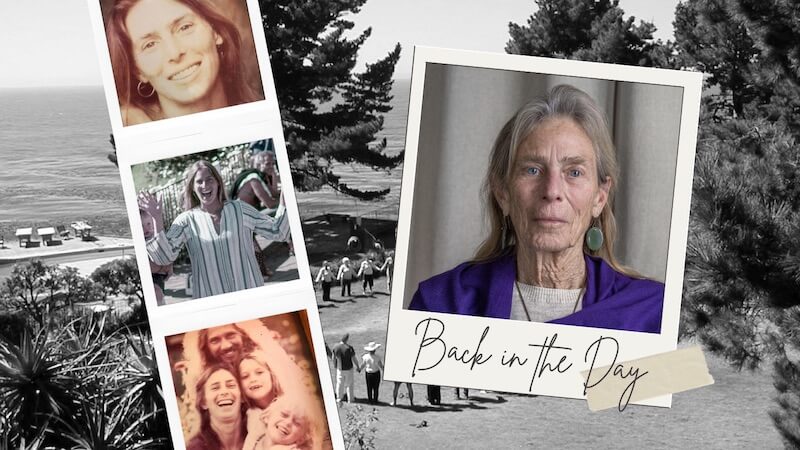
I had been raised in a conservative way. I had a loving family, deep friends, and a wonderful husband, but I just had this need to break loose.
When I arrived in the summer of ’69, Big Sur was full of hippies. People everywhere — living in trucks, playing music, and getting high. There was just this magic and beauty and freedom here that reflected what was really happening in the country.
Big Sur was a mecca for all the change and all the newness that was going on, especially with the younger generation. I wasn't a hippie. I was a little older, and I wanted some of the creature comforts that I was used to. I didn't want to live on beans and rice and sleep in a car. That wasn't really who I was, but I was fringe; I believed in the movement, in the freedom, and what was happening. I was kind of trying to find my way in it. Really, I was trying to find myself.
Esalen was just completely powerful and happening and exciting. There were so many fabulous, interesting people coming through. The people who lived here just kind of wandered in. It was a very organic process. It wasn't crowded in those days. I ran into an old boyfriend of mine and he said, “Sure, I've got room! Come on and stay here!” So I moved in with him and we ended up having a couple of wonderful years together, including some mind-blowing experiences.
They encouraged everybody to participate in the workforce, so I got a job in the kitchen. But I didn't know anything about cooking, so I started to study massage, and I had a real feeling for it. In those days, there were only three or four people doing massage. It was quite easy to get on the crew.
Massages cost $15 at the time, of which we got $12.50. The Esalen massage style was influenced by the location next to the water, flowing movements and the sensory awareness taught by Charlotte Selver and Bernie Gunther. It was slower and more sensual than it is now. We were exploring touch, exploring that it's okay to be touched. It's okay to have a body. This was a pretty new concept after the ’50s. That was a tight time in our culture. Women were wearing girdles and bras then. We were divorced from the body: The body was a dead end. But sensory awareness and the movement and massage brought a sense of embodiment.
There wasn't one spirituality, although spirituality was definitely alive and happening, and people were beginning to practice yoga and Tai Chi and meditation. It's always been a very mixed palette at Esalen. Dick Price always held that dear — the idea that nobody captures the flag. Dick was dearly loved and respected. His attitude was that we’d offer many approaches to change.
The encounter workshops were really extreme and, boy, people would go at it with each other — not always with the greatest outcome. Seymore Carter even brought in the Synanon style. Their method was extremely confrontational. The whole group of people would find your weakest spot, and then everybody would come at you. There'd be some kind of a breakthrough, or breakdown. But when it was over, everybody walked away. There was no sense of putting this person back together, helping them piece it together. It was just sort of brutally confrontational. I wouldn't want to practice in that way now, but it did help me to learn how to speak more honestly and openly to people. It was interesting, but damage was done along the way.
It was just so different then. Esalen was so tiny and small. Joan Baez always came and sang. There were the Big Sur Folk Festivals with Joni Mitchell and Crosby, Stills, Nash and Young. There were so many magical moments. In fact, Bruce Springsteen was here on New Years, 1969. He and a few of his band, I guess the E Street band? Whoever they were at the time, they camped up by where the [Park] school is now. There was a man named Gopher who had a little magic stone house up there. They camped in his yard and performed New Year's Eve at Esalen.
There weren't many families because there wasn't a lot of family housing. There wasn't any school for children until Dick Price had a child in 1975, one year before I had Lucia. An amazing woman named Janet Lederman, a student of Fritz Perls, decided to open a preschool for the kids. She started Gazebo, which was the most amazing school for our children. Janet was very much a cutting-edge human being. She didn't have her own children, but she knew so much about children and how to be with them. She built the Gazebo on the premise that everything there is for children — so is there a safe environment?
And so everything was their size. The little benches, the little stools, Pottyville. Everything was made for the children. The ground was not flat, so the kids learned right away that they had to balance and get into their bodies. They weren't on concrete; they were in nature with the eucalyptus trees and the butterflies. There were always animals, goats, pigs, even a pony.
This land is such a gift. I think that's one reason that we've maintained. We’re remote, and we're small, and we’re intimate. Everybody that comes here, it feels like they've come home. Those are the words you hear again and again from the seminarians and the guests. I think what they really feel is they've come home to themselves. It's a place where that's supported, and that's what we want. We want people to come home to themselves, and we want that for ourselves. Come and learn. Find out who you are.
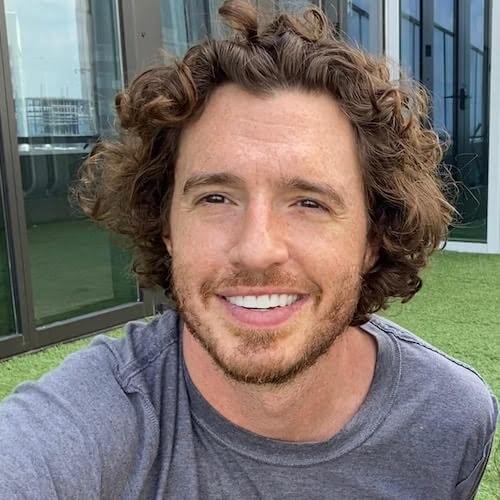
“Remembering to be as self compassionate as I can and praying to the divine that we're all a part of.”
–Aaron
“Prayer, reading, meditation, walking.”
–Karen
“Erratically — which is an ongoing stream of practice to find peace.”
–Charles
“Try on a daily basis to be kind to myself and to realize that making mistakes is a part of the human condition. Learning from our mistakes is a journey. But it starts with compassion and caring. First for oneself.”
–Steve
“Physically: aerobic exercise, volleyball, ice hockey, cycling, sailing. Emotionally: unfortunately I have to work to ‘not care’ about people or situations which may end painfully. Along the lines of ‘attachment is the source of suffering’, so best to avoid it or limit its scope. Sad though because it could also be the source of great joy. Is it worth the risk?“
–Rainer
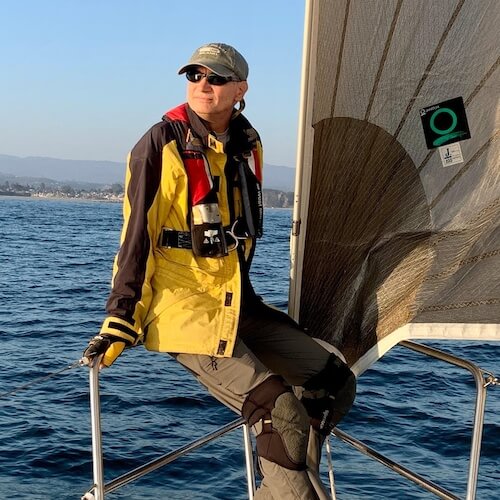

“It's time for my heart to be nurtured on one level yet contained on another. To go easy on me and to allow my feelings to be validated, not judged harshly. On the other hand, to let the heart rule with equanimity and not lead the mind and body around like a master.”
–Suzanne
“I spend time thinking of everything I am grateful for, and I try to develop my ability to express compassion for myself and others without reservation. I take time to do the things I need to do to keep myself healthy and happy. This includes taking experiential workshops, fostering relationships, and participating within groups which have a similar interest to become a more compassionate and fulfilled being.“
–Peter
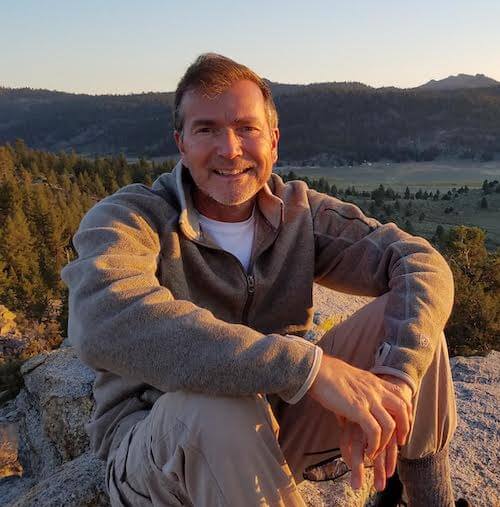
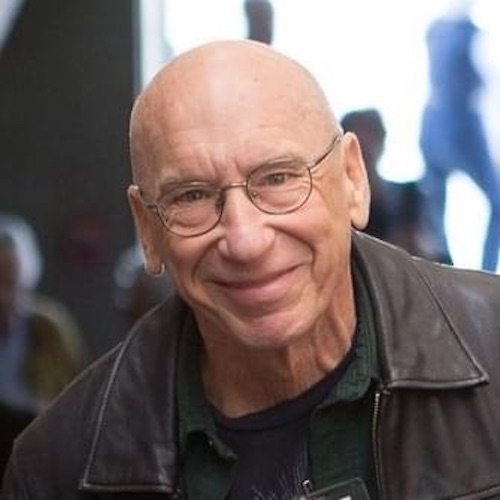
“Self-forgiveness for my own judgments. And oh yeah, coming to Esalen.”
–David B.
“Hmm, this is a tough one! I guess I take care of my heart through fostering relationships with people I feel connected to. Spending quality time with them (whether we're on the phone, through messages/letters, on Zoom, or in-person). Being there for them, listening to them, sharing what's going on with me, my struggles and my successes... like we do in the Esalen weekly Friends of Esalen Zoom sessions!”
–Lori

“I remind myself in many ways of the fact that " Love is all there is!" LOVE is the prize and this one precious life is the stage we get to learn our lessons. I get out into nature, hike, camp, river kayak, fly fish, garden, I create, I dance (not enough!), and I remain grateful for each day, each breath, each moment. Being in the moment, awake, and remembering the gift of life and my feeling of gratitude for all of creation.”
–Steven
“My physical heart by limiting stress and eating a heart-healthy diet. My emotional heart by staying in love with the world and by knowing that all disappointment and loss will pass.“
–David Z.
Today, September 29, is World Heart Day. Strike up a conversation with your own heart and as you feel comfortable, encourage others to do the same. As part of our own transformations and self-care, we sometimes ask for others to illuminate and enliven our hearts or speak our love language.
What if we could do this for ourselves too, even if just for today… or to start a heart practice, forever?

I had been raised in a conservative way. I had a loving family, deep friends, and a wonderful husband, but I just had this need to break loose.
When I arrived in the summer of ’69, Big Sur was full of hippies. People everywhere — living in trucks, playing music, and getting high. There was just this magic and beauty and freedom here that reflected what was really happening in the country.
Big Sur was a mecca for all the change and all the newness that was going on, especially with the younger generation. I wasn't a hippie. I was a little older, and I wanted some of the creature comforts that I was used to. I didn't want to live on beans and rice and sleep in a car. That wasn't really who I was, but I was fringe; I believed in the movement, in the freedom, and what was happening. I was kind of trying to find my way in it. Really, I was trying to find myself.
Esalen was just completely powerful and happening and exciting. There were so many fabulous, interesting people coming through. The people who lived here just kind of wandered in. It was a very organic process. It wasn't crowded in those days. I ran into an old boyfriend of mine and he said, “Sure, I've got room! Come on and stay here!” So I moved in with him and we ended up having a couple of wonderful years together, including some mind-blowing experiences.
They encouraged everybody to participate in the workforce, so I got a job in the kitchen. But I didn't know anything about cooking, so I started to study massage, and I had a real feeling for it. In those days, there were only three or four people doing massage. It was quite easy to get on the crew.
Massages cost $15 at the time, of which we got $12.50. The Esalen massage style was influenced by the location next to the water, flowing movements and the sensory awareness taught by Charlotte Selver and Bernie Gunther. It was slower and more sensual than it is now. We were exploring touch, exploring that it's okay to be touched. It's okay to have a body. This was a pretty new concept after the ’50s. That was a tight time in our culture. Women were wearing girdles and bras then. We were divorced from the body: The body was a dead end. But sensory awareness and the movement and massage brought a sense of embodiment.
There wasn't one spirituality, although spirituality was definitely alive and happening, and people were beginning to practice yoga and Tai Chi and meditation. It's always been a very mixed palette at Esalen. Dick Price always held that dear — the idea that nobody captures the flag. Dick was dearly loved and respected. His attitude was that we’d offer many approaches to change.
The encounter workshops were really extreme and, boy, people would go at it with each other — not always with the greatest outcome. Seymore Carter even brought in the Synanon style. Their method was extremely confrontational. The whole group of people would find your weakest spot, and then everybody would come at you. There'd be some kind of a breakthrough, or breakdown. But when it was over, everybody walked away. There was no sense of putting this person back together, helping them piece it together. It was just sort of brutally confrontational. I wouldn't want to practice in that way now, but it did help me to learn how to speak more honestly and openly to people. It was interesting, but damage was done along the way.
It was just so different then. Esalen was so tiny and small. Joan Baez always came and sang. There were the Big Sur Folk Festivals with Joni Mitchell and Crosby, Stills, Nash and Young. There were so many magical moments. In fact, Bruce Springsteen was here on New Years, 1969. He and a few of his band, I guess the E Street band? Whoever they were at the time, they camped up by where the [Park] school is now. There was a man named Gopher who had a little magic stone house up there. They camped in his yard and performed New Year's Eve at Esalen.
There weren't many families because there wasn't a lot of family housing. There wasn't any school for children until Dick Price had a child in 1975, one year before I had Lucia. An amazing woman named Janet Lederman, a student of Fritz Perls, decided to open a preschool for the kids. She started Gazebo, which was the most amazing school for our children. Janet was very much a cutting-edge human being. She didn't have her own children, but she knew so much about children and how to be with them. She built the Gazebo on the premise that everything there is for children — so is there a safe environment?
And so everything was their size. The little benches, the little stools, Pottyville. Everything was made for the children. The ground was not flat, so the kids learned right away that they had to balance and get into their bodies. They weren't on concrete; they were in nature with the eucalyptus trees and the butterflies. There were always animals, goats, pigs, even a pony.
This land is such a gift. I think that's one reason that we've maintained. We’re remote, and we're small, and we’re intimate. Everybody that comes here, it feels like they've come home. Those are the words you hear again and again from the seminarians and the guests. I think what they really feel is they've come home to themselves. It's a place where that's supported, and that's what we want. We want people to come home to themselves, and we want that for ourselves. Come and learn. Find out who you are.

“Remembering to be as self compassionate as I can and praying to the divine that we're all a part of.”
–Aaron
“Prayer, reading, meditation, walking.”
–Karen
“Erratically — which is an ongoing stream of practice to find peace.”
–Charles
“Try on a daily basis to be kind to myself and to realize that making mistakes is a part of the human condition. Learning from our mistakes is a journey. But it starts with compassion and caring. First for oneself.”
–Steve
“Physically: aerobic exercise, volleyball, ice hockey, cycling, sailing. Emotionally: unfortunately I have to work to ‘not care’ about people or situations which may end painfully. Along the lines of ‘attachment is the source of suffering’, so best to avoid it or limit its scope. Sad though because it could also be the source of great joy. Is it worth the risk?“
–Rainer


“It's time for my heart to be nurtured on one level yet contained on another. To go easy on me and to allow my feelings to be validated, not judged harshly. On the other hand, to let the heart rule with equanimity and not lead the mind and body around like a master.”
–Suzanne
“I spend time thinking of everything I am grateful for, and I try to develop my ability to express compassion for myself and others without reservation. I take time to do the things I need to do to keep myself healthy and happy. This includes taking experiential workshops, fostering relationships, and participating within groups which have a similar interest to become a more compassionate and fulfilled being.“
–Peter


“Self-forgiveness for my own judgments. And oh yeah, coming to Esalen.”
–David B.
“Hmm, this is a tough one! I guess I take care of my heart through fostering relationships with people I feel connected to. Spending quality time with them (whether we're on the phone, through messages/letters, on Zoom, or in-person). Being there for them, listening to them, sharing what's going on with me, my struggles and my successes... like we do in the Esalen weekly Friends of Esalen Zoom sessions!”
–Lori

“I remind myself in many ways of the fact that " Love is all there is!" LOVE is the prize and this one precious life is the stage we get to learn our lessons. I get out into nature, hike, camp, river kayak, fly fish, garden, I create, I dance (not enough!), and I remain grateful for each day, each breath, each moment. Being in the moment, awake, and remembering the gift of life and my feeling of gratitude for all of creation.”
–Steven
“My physical heart by limiting stress and eating a heart-healthy diet. My emotional heart by staying in love with the world and by knowing that all disappointment and loss will pass.“
–David Z.
Today, September 29, is World Heart Day. Strike up a conversation with your own heart and as you feel comfortable, encourage others to do the same. As part of our own transformations and self-care, we sometimes ask for others to illuminate and enliven our hearts or speak our love language.
What if we could do this for ourselves too, even if just for today… or to start a heart practice, forever?

I had been raised in a conservative way. I had a loving family, deep friends, and a wonderful husband, but I just had this need to break loose.
When I arrived in the summer of ’69, Big Sur was full of hippies. People everywhere — living in trucks, playing music, and getting high. There was just this magic and beauty and freedom here that reflected what was really happening in the country.
Big Sur was a mecca for all the change and all the newness that was going on, especially with the younger generation. I wasn't a hippie. I was a little older, and I wanted some of the creature comforts that I was used to. I didn't want to live on beans and rice and sleep in a car. That wasn't really who I was, but I was fringe; I believed in the movement, in the freedom, and what was happening. I was kind of trying to find my way in it. Really, I was trying to find myself.
Esalen was just completely powerful and happening and exciting. There were so many fabulous, interesting people coming through. The people who lived here just kind of wandered in. It was a very organic process. It wasn't crowded in those days. I ran into an old boyfriend of mine and he said, “Sure, I've got room! Come on and stay here!” So I moved in with him and we ended up having a couple of wonderful years together, including some mind-blowing experiences.
They encouraged everybody to participate in the workforce, so I got a job in the kitchen. But I didn't know anything about cooking, so I started to study massage, and I had a real feeling for it. In those days, there were only three or four people doing massage. It was quite easy to get on the crew.
Massages cost $15 at the time, of which we got $12.50. The Esalen massage style was influenced by the location next to the water, flowing movements and the sensory awareness taught by Charlotte Selver and Bernie Gunther. It was slower and more sensual than it is now. We were exploring touch, exploring that it's okay to be touched. It's okay to have a body. This was a pretty new concept after the ’50s. That was a tight time in our culture. Women were wearing girdles and bras then. We were divorced from the body: The body was a dead end. But sensory awareness and the movement and massage brought a sense of embodiment.
There wasn't one spirituality, although spirituality was definitely alive and happening, and people were beginning to practice yoga and Tai Chi and meditation. It's always been a very mixed palette at Esalen. Dick Price always held that dear — the idea that nobody captures the flag. Dick was dearly loved and respected. His attitude was that we’d offer many approaches to change.
The encounter workshops were really extreme and, boy, people would go at it with each other — not always with the greatest outcome. Seymore Carter even brought in the Synanon style. Their method was extremely confrontational. The whole group of people would find your weakest spot, and then everybody would come at you. There'd be some kind of a breakthrough, or breakdown. But when it was over, everybody walked away. There was no sense of putting this person back together, helping them piece it together. It was just sort of brutally confrontational. I wouldn't want to practice in that way now, but it did help me to learn how to speak more honestly and openly to people. It was interesting, but damage was done along the way.
It was just so different then. Esalen was so tiny and small. Joan Baez always came and sang. There were the Big Sur Folk Festivals with Joni Mitchell and Crosby, Stills, Nash and Young. There were so many magical moments. In fact, Bruce Springsteen was here on New Years, 1969. He and a few of his band, I guess the E Street band? Whoever they were at the time, they camped up by where the [Park] school is now. There was a man named Gopher who had a little magic stone house up there. They camped in his yard and performed New Year's Eve at Esalen.
There weren't many families because there wasn't a lot of family housing. There wasn't any school for children until Dick Price had a child in 1975, one year before I had Lucia. An amazing woman named Janet Lederman, a student of Fritz Perls, decided to open a preschool for the kids. She started Gazebo, which was the most amazing school for our children. Janet was very much a cutting-edge human being. She didn't have her own children, but she knew so much about children and how to be with them. She built the Gazebo on the premise that everything there is for children — so is there a safe environment?
And so everything was their size. The little benches, the little stools, Pottyville. Everything was made for the children. The ground was not flat, so the kids learned right away that they had to balance and get into their bodies. They weren't on concrete; they were in nature with the eucalyptus trees and the butterflies. There were always animals, goats, pigs, even a pony.
This land is such a gift. I think that's one reason that we've maintained. We’re remote, and we're small, and we’re intimate. Everybody that comes here, it feels like they've come home. Those are the words you hear again and again from the seminarians and the guests. I think what they really feel is they've come home to themselves. It's a place where that's supported, and that's what we want. We want people to come home to themselves, and we want that for ourselves. Come and learn. Find out who you are.

“Remembering to be as self compassionate as I can and praying to the divine that we're all a part of.”
–Aaron
“Prayer, reading, meditation, walking.”
–Karen
“Erratically — which is an ongoing stream of practice to find peace.”
–Charles
“Try on a daily basis to be kind to myself and to realize that making mistakes is a part of the human condition. Learning from our mistakes is a journey. But it starts with compassion and caring. First for oneself.”
–Steve
“Physically: aerobic exercise, volleyball, ice hockey, cycling, sailing. Emotionally: unfortunately I have to work to ‘not care’ about people or situations which may end painfully. Along the lines of ‘attachment is the source of suffering’, so best to avoid it or limit its scope. Sad though because it could also be the source of great joy. Is it worth the risk?“
–Rainer


“It's time for my heart to be nurtured on one level yet contained on another. To go easy on me and to allow my feelings to be validated, not judged harshly. On the other hand, to let the heart rule with equanimity and not lead the mind and body around like a master.”
–Suzanne
“I spend time thinking of everything I am grateful for, and I try to develop my ability to express compassion for myself and others without reservation. I take time to do the things I need to do to keep myself healthy and happy. This includes taking experiential workshops, fostering relationships, and participating within groups which have a similar interest to become a more compassionate and fulfilled being.“
–Peter


“Self-forgiveness for my own judgments. And oh yeah, coming to Esalen.”
–David B.
“Hmm, this is a tough one! I guess I take care of my heart through fostering relationships with people I feel connected to. Spending quality time with them (whether we're on the phone, through messages/letters, on Zoom, or in-person). Being there for them, listening to them, sharing what's going on with me, my struggles and my successes... like we do in the Esalen weekly Friends of Esalen Zoom sessions!”
–Lori

“I remind myself in many ways of the fact that " Love is all there is!" LOVE is the prize and this one precious life is the stage we get to learn our lessons. I get out into nature, hike, camp, river kayak, fly fish, garden, I create, I dance (not enough!), and I remain grateful for each day, each breath, each moment. Being in the moment, awake, and remembering the gift of life and my feeling of gratitude for all of creation.”
–Steven
“My physical heart by limiting stress and eating a heart-healthy diet. My emotional heart by staying in love with the world and by knowing that all disappointment and loss will pass.“
–David Z.
Today, September 29, is World Heart Day. Strike up a conversation with your own heart and as you feel comfortable, encourage others to do the same. As part of our own transformations and self-care, we sometimes ask for others to illuminate and enliven our hearts or speak our love language.
What if we could do this for ourselves too, even if just for today… or to start a heart practice, forever?